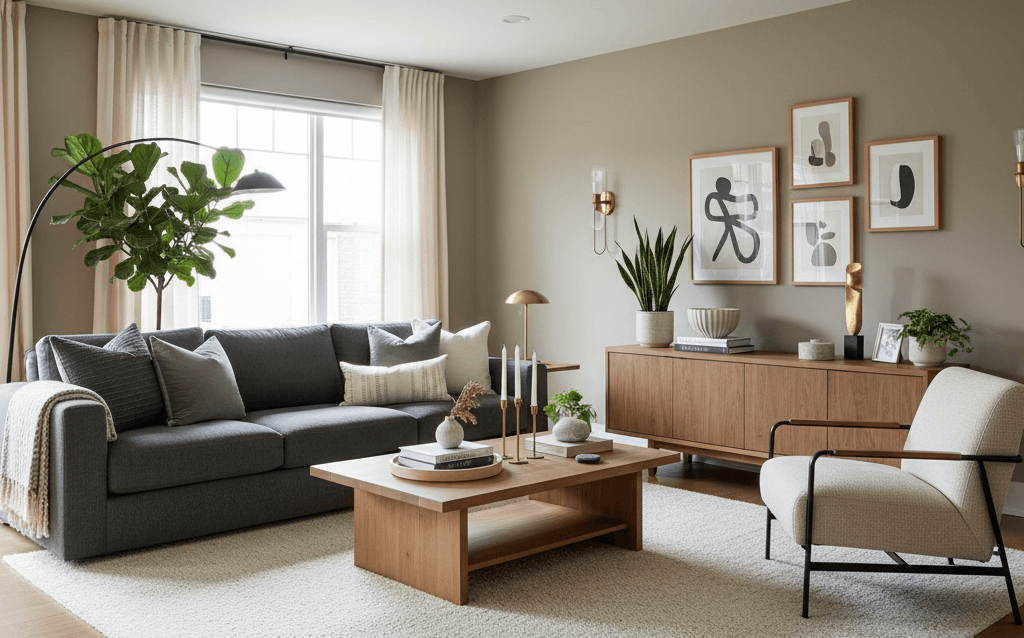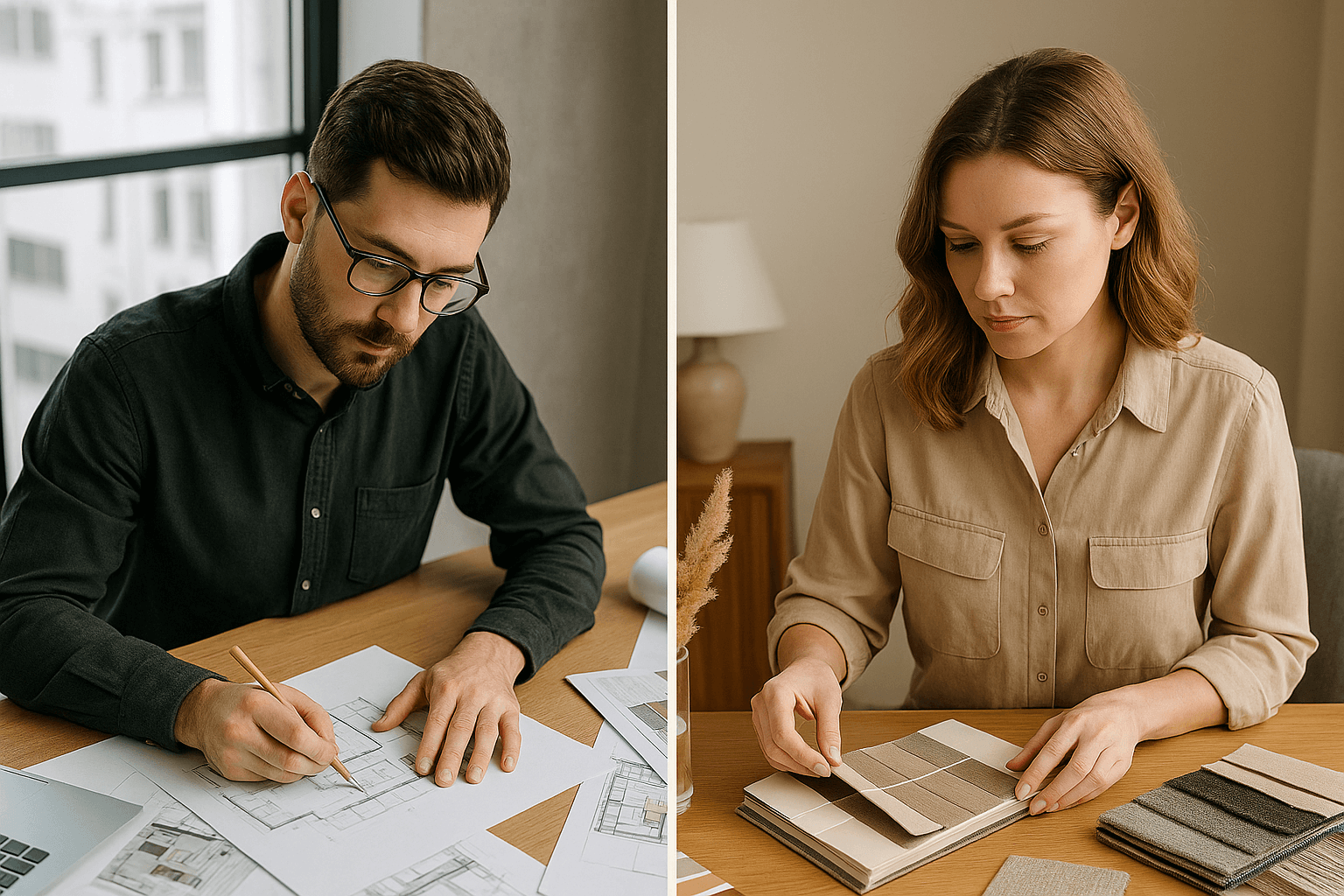The interior design world is full of formulas, methods, and rules that help create balance, beauty, and visual harmony. Among those, the 3-4-5 Rule has recently become one of the most talked-about approaches because it’s simple, memorable, and incredibly effective for creating layered, designer-looking spaces. Whether you are styling a home, decorating a room, or refreshing an existing space, this rule gives you a clear roadmap to follow.
In this guide, you’ll learn exactly what the 3-4-5 rule is, why it works so well, how to apply it, common mistakes to avoid, and multiple real-world examples that can inspire your own projects.
What Is the 3-4-5 Rule in Interior Design?
The 3-4-5 Rule is a decorating formula that helps you build a room that feels rich, layered, and intentionally cohesive. It works like this:
- 3 patterns
- 4 design styles or periods
- 5 colors or textures
This means that in any well-styled room, you should aim to mix at least three different patterns, incorporate four types of stylistic influences, and introduce five colors or textures to build depth and interest.
It might sound like a lot, but when done correctly, the result is a room that feels professionally designed — full of character, visual rhythm, and personality.
Why the 3-4-5 Rule Works?
Interior design is all about balance. Too few elements and the room feels flat; too many and it feels chaotic. The 3-4-5 rule strikes the perfect equilibrium by adding structure to creativity.
1. It Creates Visual Layers
Layering is what separates amateur decorating from magazine-worthy interiors. The 3-4-5 rule ensures you’re combining different visual elements that build richness and storytelling into your space.
2. It Encourages Mixing Instead of Matching
When everything perfectly matches, a room feels predictable and lifeless. Mixing patterns, periods, and textures makes your space feel “collected” rather than “purchased in one day.”
3. It Prevents Overthinking
Instead of wondering “Is this enough?” or “Does this look balanced?”, you have a formula that guides your choices while still allowing creativity.
4. It Works for Any Interior Style
Minimalist, bohemian, modern, classic, maximalist — the rule adapts to all styles and helps elevate the final outcome.
Breaking Down the 3-4-5 Rule
1. Use 3 Patterns
Patterns add energy, depth, and movement. Using three patterns ensures the room has variety without chaos.
Here’s how to use them properly:
Mix pattern scales:
- One large-scale pattern (e.g., wallpaper or rug)
- One medium-scale pattern (e.g., cushions)
- One small-scale pattern (e.g., throw or accessory)
Balance busy and calm:
Not all patterns need to be bold. Subtle weaving, ribbed surfaces, and tone-on-tone prints count as patterns too.
Stick to one cohesive palette:
This keeps the patterns visually related even if they differ in shape and style.
2. Include 4 Design Styles or Period Influences
This doesn’t mean you need furniture from four different centuries. Instead, think of influences or touchpoints from various styles. A modern home can still use a vintage mirror, a mid-century lamp, a contemporary sofa, and traditional moulding.
Ways to mix styles naturally:
- Combine a modern sofa with a vintage rug
- Add an antique mirror above a minimalist console
- Pair contemporary art with a classic chandelier
- Mix mid-century chairs with a rustic dining table
Mixing styles creates a narrative — the room feels like it evolved over time rather than being assembled all at once.
3. Add 5 Colors or Textures
This part is where most of the magic happens. The brain loves tactile and visual variation, so using five colors or textures keeps the room exciting and dimensional.
Textures can include:
- Velvet
- Linen
- Wood grain
- Metal finishes
- Glass
- Stone
- Woven cane
- Rattan
- Ceramic
- Matte paint
- Glossy lacquer
Colors include:
- Dominant color (60% of the room)
- Secondary color (30%)
- Accent colors (10% combined)
Remember: textures count as “colors” in this rule, so you don’t need a rainbow — even neutral rooms can have five “textures” and feel rich.
How to Apply the 3-4-5 Rule Step-by-Step?
Here’s a practical workflow to design or refresh a room:
Step 1: Start with Your Anchor Piece
This could be your sofa, bed, dining table, or a statement rug. Let this anchor help define the palette and style direction.
Step 2: Add Three Patterns
Choose patterns with different scales or different moods. One can be bold, another soft, another subtle.
Step 3: Introduce Four Style Periods
Look through your existing pieces — you may already have mixed styles without noticing. Add contrast in small ways like:
- A vintage vase
- A classic wall moulding
- A modern pendant light
- A contemporary painting
Step 4: Build in Five Colors or Textures
Layer materials intentionally. If the room feels flat, add a contrasting texture — a woven basket, brass lamp, or ribbed ceramic object.
Step 5: Edit for Balance
Remove anything that feels too heavy or duplicative. The goal is intentional layering, not clutter.
Examples of Rooms Using the 3-4-5 Rule
Living Room Example
- Patterns: floral rug, striped cushions, geometric throw
- Styles: mid-century sofa, classic mirror, boho accent chair, modern art
- Textures/Colors: velvet, jute, brass, wood, linen
The result is a warm, layered living room that feels curated and timeless.
Bedroom Example
- Patterns: subtle duvet pattern, bold accent wall, patterned bench upholstery
- Styles: contemporary bed frame, vintage nightstand, modern lamps, minimal art
- Textures/Colors: linen, brushed metal, painted wood, wool, ceramic
This makes the bedroom feel cozy, interesting, and visually balanced.
Dining Room Example
- Patterns: textured rug, patterned plates, striped runner
- Styles: rustic table, modern chairs, classic pendant, industrial shelving
- Textures/Colors: natural wood, leather, metal, stone, glass
A simple space becomes magazine-worthy with the right layering.
Common Mistakes to Avoid
1. Going Too Literal
“Four styles” doesn’t mean four major furniture sets. They can be small touches.
2. Using Patterns of the Same Scale
If all patterns are busy or all subtle, the room looks flat or loud. Mix scale.
3. Overusing Color
You don’t need five bold colors — even neutral rooms can count textures instead.
4. Forgetting Negative Space
A beautifully layered room still needs breathing room. Empty space is part of the design.
5. Mixing Without Unifying
Use a consistent color palette to keep diverse styles connected.
Benefits of Using the 3-4-5 Rule
- Makes decorating easier and more structured
- Helps beginners create professionally styled rooms
- Encourages creativity and individuality
- Prevents dull, overly matched designs
- Ensures a room feels “collected,” not “assembled”
- Works with any budget and any home style
- Ideal for photography and social media-ready interiors
How the 3-4-5 Rule Compares to Other Popular Design Formulas?
60-30-10 Color Rule
Focuses on color proportions.
Use together with the 3-4-5 rule to get both color balance and styling depth.
Rule of Thirds
Used in styling and composition — especially for shelves and gallery walls.
3-5-7 Styling Rule
Used for arranging objects in odd numbers.
The 3-4-5 rule does not replace these; it enhances them.
Final Thoughts
The 3-4-5 rule is one of the easiest ways to create a beautifully layered, intentional, and visually rich interior. By combining 3 patterns, 4 style influences, and 5 colors or textures, you give your space depth, personality, and harmony — the key ingredients of top-quality interior design.
Whether you’re decorating a new home or refreshing an existing room, this rule gives you a dependable structure that still leaves plenty of room for creativity. Use it once, and you’ll see how naturally it elevates your design decisions.










